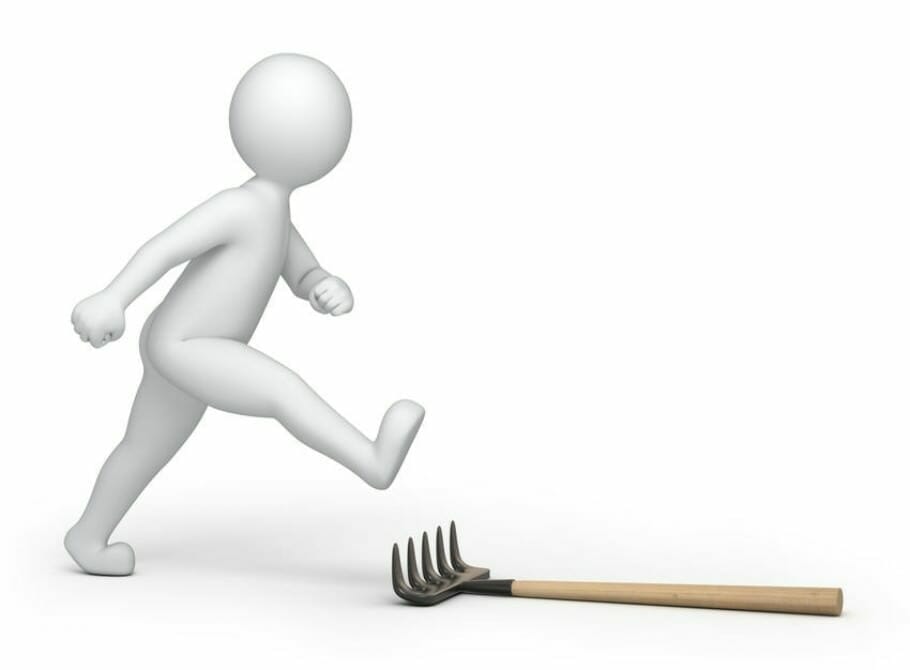Your shopping cart is currently empty!
For their successful, good life Information you really need: Government-funded publisher, awarded the Global Business Award as Publisher of the Year: Books, Magazine, eCourses, data-driven AI-Services. Print and online publications as well as the latest technology go hand in hand - with over 20 years of experience, partners like this Federal Ministry of Education, customers like Samsung, DELL, Telekom or universities. behind it Simone Janson, German Top 10 blogger, referenced in ARD, FAZ, ZEIT, WELT, Wikipedia.
Disclosure & Copyrights: Image material created as part of a free collaboration with Shutterstock. Text originally from: “The winning genes. Talent, Practice and the Truth about Extraordinary Success” (2020) and Long Live the Generalist!: Why They Are More Successful in a Specialized World” (2020)
, published by Münchener Verlagsgruppe (MVG), reprinted with the kind permission of the publisher.
Developing potential & promoting talent: born winners?
By David Epstein (More) • Last updated on October 27.03.2024, XNUMX • First published on 06.10.2020/XNUMX/XNUMX • So far 8497 readers, 1806 social media shares Likes & Reviews (5 / 5) • Read & write comments
Everyone knows these guys who have success all over light make it look. But is this talent really innate or maybe the result of hard work?

- The top athlete from high school
- Is everything really easy? A natural talent!
- What is a genome?
- Talent and potential: What is inherited and what has been learned is closely intertwined
- Why are good athletes so good?
- The occlusion test
- The difference between professionals and amateurs: the perception of the game
- Is extraordinary perception the result of genetic predisposition?
- What do grandmasters do differently at chess?
- Excellent retention thanks to experience
- Top athletes process information differently
- The power of training: when we look ahead from thinking
- Top books on the subject
- Read text as PDF
- Advice on success, goal achievement or marketing
- Book eCourse on Demand
- Skate eBook as desired
The top athlete from high school
Micheno Lawrence was a sprinter in my high schoolTeam. The son of Jamaican parents, he was short and plump, and the mesh shirt he wore to practice like some of his other Jamaican teammates stretched over a bulging stomach. After school he worked at McDonald's and it was joked that he helped himself too often there. But that didn't stop him from being impressive fast be.
Even in high school, I wondered if Micheno and the other Jamaican kids who make up our team were like that successfully might have brought a special speed gene from their tiny island.
When a small exodus brought Jamaican families to Evanston, Illinois in the 1970s and 1980s, athletics became a popular sport at Evanston Township High School. (As a result, our team won twenty-four consecutive tournaments between 1976 and 1999.) As befits exceptional athletes, Micheno spoke of himself in the third person. "Micheno has no heart," he used to say before major competitions, meaning that he would mercilessly defeat his competitors. In 1998, my senior year, he won the Illinois State Championship by shooting from fourth to first place as the final runner in the 4 × 400 meter relay.
Is everything really easy? A natural talent!
The books on the subject (advertising)
We all know such an athlete from school. One that makes everything look very easy. Regardless of whether it was a quarterback or a shortstop, a high jumper or a point guard - it was a natural talent. For real? Did Eli and Peyton Manning inherit their father Archie's quarterback genes, or did they become NFL stars because they grew up with a football in hand?
Sure, Joe "Jellybean" Bryant passed his stature on to his son Kobe, but where did the offspring get his explosive start? How is it that Paolo Maldini led AC Milan to the Champions League title - forty years after his father Cesare did the same? Did Ken Griffey Sr. inherit baseball genes from his boy? Or was the real legacy of the junior growing up in a baseball clubhouse? Or in both? For the first time in sports history formed in 2010 Mother-Daughter team consisting of Irina and Olga Lenskiy, one-half of the Israel national team in the 4x100m relay. Here the speed gene was obviously in the Family. But is there such a thing? Are there even "winning genes"?
What is a genome?
In April 2003, an international consortium of scientists announced the completion of the Human Genome Project. After thirteen years of work (and 200.000 years after the advent of the anatomically modern People) the scientists had mapped the human genome. All of the approximately 23.000 regions of DNA that contain genes had been identified. Suddenly, researchers knew where to look for the origins of human traits, from hair color to hereditary diseases to hand-eye coordination; but little did they know how difficult it would be to read the genetic instructions.
The genome has to be imagined as a 23.000-page recipe book that is in every human cell and contains instructions for the formation of the body. Anyone who can read these 23.000 pages could find out how the body is created. At least that was the wishful thinking of scientists. However, some of the 23.000 pages contain instructions for many different body functions, and if one page is moved, changed, or torn out, some of the other 22.999 pages can suddenly contain new instructions.
Talent and potential: What is inherited and what has been learned is closely intertwined
Discounts for your success (advertising)!
In the years following the sequencing of the human genome, sports scientists singled out individual genes that they suspected were the athletic Performance and compared different versions of these genes from athletes and non-athletes. The Problem in such studies is that individual genes usually have such small effects that they are undetectable in small group studies. Even with characteristics that are easy to measure, such as height, the associated genes usually elude detection. Not because they don't exist, but because they are hidden in the complexity of the genome.
Slowly but for sure Scientists went from studying single genes to new and innovative ones Methods to analyze how genetic instructions work. Add to this what biologists, physiologists and sports scientists have discovered about the effects of biological predisposition and enthusiasm for training on performance and the great debate about inherited or learned athleticism appears in a whole new light. However, this requires that we venture deep into the undergrowth of such sensitive issues as gender and ethnicity. The reality is that in all areas of exceptional performance, inheritance and learning are so intertwined that the answer is always both. However, this is not a satisfactory conclusion for science. Scientists have to answer the question: »How act What has been learned and what has been inherited together in concrete terms?” And “What is the proportion in each case?” In order to answer these questions, sports scientists have advanced into the field of modern genetic research.
Why are good athletes so good?
Almost forty years before Janet Starkes was one of the most influential sports researchers in the Welt was a 1,57'XNUMX" point guard who spent one season on the Canada national basketball team. However, her lasting impact on the sport came off the field with her work as a graduate student at the University by Waterloo. Her research goal was to find out why good athletes are, well, good. Tests on the "hardware" - the innate physical characteristics of athletes, such as simple reaction time - had done surprisingly little to explain peak athletic performance. The reaction times of top athletes were always around a fifth of a second, as were the reaction times of randomly selected test subjects.
So Starkes looked elsewhere for the answer. She'd heard of studies of air traffic controllers that used "signal recognition tests" to measure how quickly an experienced air traffic controller combed through visual information to determine the presence or absence of critical signals. And she decided that such an investigation should be carried out exercise of learned cognitive perceptual skills might prove worthwhile. So in 1975, as part of her thesis for Waterloo, Starkes invented the modern "occlusion test."
The occlusion test
She collected thousands of photos from women's volleyball games and made slides of images where the volleyball was in the picture or had just left the picture area. In many of the photos, the physical posture and dynamics of the players were almost identical, regardless of whether the ball was in the picture or not, as hardly anything had changed since the moment the ball left the picture. Starkes then set up a spotting scope in front of a screen with a slide projector and had volleyball players look at the slides for a split second and then guess whether the ball was in the flashing image or not.
The viewing time was too short for the viewers to actually see the ball. So it should be determined whether the players the entire field and the body language of the others differently than an average person and whether they infer the presence of the ball from this. The results of the first occlusion tests amazed Starkes.
The difference between professionals and amateurs: the perception of the game
Unlike the reaction time studies, the difference between elite athletes and beginners was enormous. It took the elite players a split second to determine if the ball was there. And the better the player, the faster she was able to extract relevant information from each slide. Starkes once tested members of the Canada national volleyball team, which at the time included one of the best setters in the world. From an image that was just a sixteen-thousandth of a second in front of her Eyes flashed, the operator could deduce whether the volleyball was there.
"It's an amazing achievement," Starkes assured me. "People who don't play volleyball only see a flash of light in sixteen milliseconds." The world-class setter not only recognized the presence or absence of the ball in sixteen milliseconds, but occasionally spotted enough visual information to know when and where picture was taken. "After each slide, she would say 'yes' or 'no' if there was a ball," Starkes reports, "and then she would sometimes say, 'That was the Sherbrooke team after they got their new jerseys, so the picture must have been taken at such and such a time.‹« What a one Ms. was a flash of light told the other a whole story. This was a clear indication that a key difference between experienced and inexperienced athletes was not their sheer responsiveness, but that they had learned to perceive the game.
Is extraordinary perception the result of genetic predisposition?
Shortly after earning her PhD, Starkes was accepted onto the faculty of McMaster University and continued her occlusion research with the Canada national field hockey team. At the time, the field hockey school of thought was that innate reflexes were of prime importance. Conversely, at the time, the notion that top performance in the game required learned perceptive skills was, in Starkes' words, »heresy«. 1979, as a strongman of the Canadian national field hockey team at the Preparation helped prepare for the 1980 Olympics, she was dismayed that the national team coaches were becoming outdated when drafting the team ideas supported. "They thought everyone would see the field the same way," she says. “You bet at the selection to simple reaction time tests and felt that this was an indicator of who the best goalkeepers or strikers would be. To my amazement, theirs wasn't clearthat the sheer reaction time may not mean anything. ”Starkes knew better.
During her occlusion tests on field hockey players, she found exactly what she found on volleyball players, and much more. Elite field hockey players were not only able to tell in less than a moment whether a ball was in the picture, but also, after a cursory glance, reconstruct the entire field of play. This was confirmed in basketball and football. It was as if every top athlete miraculously had a photographic memory when it came to their sport. So the next question is how important such perceptual skills are for top athletes and whether they are the result of genetic predisposition.
What do grandmasters do differently at chess?
The answer to this could not be found anywhere better than in a type of competition where the moves are slow and deliberate and not dependent on muscles or tendons. In the early 1940s, the Dutch chess master and psychologist Adriaan de Groot began to get to the bottom of the core of chess. De Groot examined chess players of different skill levels to find out what set a grandmaster apart from the average professional player and a professional from a club player.
According to the knowledge at that time, highly qualified chess players thought further ahead than less qualified players. This is actually true when comparing experienced players with complete beginners. As de Groot, however, grandmasters as well as strong players their decision making in an unfamiliar game situation, he found that players, despite different skill levels, thought about the same number of chess pieces and essentially considered the same number of possible moves. Then why, he wondered, did grandmasters make better moves?
Excellent retention thanks to experience
De Groot put together a group of four chess players representing different skill levels: a grand and world champion; a master; a city champion; and an average club player. Then de Groot commissioned another chess master to select different chess positions from obscure games, and with that he did something very similar to what Stark did with her athletes thirty years later: he flashed the chessboards in front of the players for a few seconds and then asked them to Reconstruct game situation on an empty board.
Differences between the skills emerged, especially between the two masters and the two non-masters, which were "so large and clear that further evidence was basically unnecessary," as de Groot wrote. In four attempts, the grandmaster reconstructed the entire board after looking at it for three seconds. The master performed the same feat twice. None of the weaker players was able to reproduce a board with perfect accuracy. In all tests, the grand master and the master placed more than 90 percent of the figures correctly, while the city master managed around 70 percent and the club player only managed around 50 percent.
In five seconds the grandmaster saw through the game situation better than the club player in fifteen minutes. These tests showed "that experience is the basis for the outstanding performance of chess masters," said de Groot. But it would be another three decades before anyone could prove that de Groot's observations were actually acquired skills and not the product of an innate superhuman memory.
Top athletes process information differently
In a landmark study published in 1973, psychologists William G. Chase and Herbert A. Simon - a later Nobel Prize winner - repeated de Groot's experiment and added a special feature: They tested players' memory of chessboards with randomly arranged positions, as shown in would never happen in a game. When the players had five seconds to study the random constellations of figures and then reconstruct them, the masters' lead disappeared. Suddenly, her memory matched that of the average gamer.
To explain their observations, Chase and Simon postulated a theory of "chunking," which has become important in understanding games like chess but also other sports, and which uses the insights gained from Janet Starkes' research on field hockey and Volleyball players helped explain. Chess masters and top athletes piece together the information on the game board or playing field. In other words, instead of delving into a great deal of detail, advanced users subconsciously group information into a few meaningful chunks, starting from patterns they already know. Whereas the average club player in de Groot's study tried to remember the arrangement of twenty individual chess pieces, the grandmaster only had to remember a few groupings of several pieces each, since the relationships between the pieces were of great importance to him.1 Grandmasters speak fluent in chess and have a mental database of millions of piece constellations divided into at least 300.000 meaningful denominations, which in turn are grouped into mental templates, large arrangements of pieces (or players in the case of field sports) within which some elements can be moved without that the entire arrangement becomes unrecognizable. Where beginners are overwhelmed by new, chaotic information, masters recognize familiar order and structure with easy-to-find information that addresses the issues at hand decision facilitate.
The power of training: when we look ahead from thinking
What is initially accomplished through slow, conscious, deductive reasoning is now accomplished through rapid, unconscious signal processing,” say Chase and Simon. "It is no exaggeration for a chess master to claim that he 'sees' the right move." Research recording the eye movements of experienced performers - be they chess players, pianists, surgeons or athletes - has found that experts with increasing experience view visual information faster and separate the wheat from the chaff. Experts steer theirs awareness Quickly move away from irrelevant input and direct them to the data they work best on decide know what to do next.
While beginners deal with individual figures or players, experts focus more on the spaces between figures or players, which are essential for the connection of the individual parts as a whole. In sport in particular, it is important that order is perceived, because from the arrangement of the players or from subtle changes in the body movements of an opponent, experienced athletes can gain crucial information in order to unconsciously make predictions about what will happen next. Bruce Abernethy was a student at the University of Queensland in the late 1970s. As an avid cricketer, he began to expand on Janet Starkes' methods of occlusion. Abernethy used a Super 8 camera to film cricket bowlers. He then showed the footage to Battern, but cut it off before the throw and let her predict where the ball would go. It is hardly surprising that experienced players were better able to predict the trajectory of the ball than inexperienced players.
Top books on the subject
Read text as PDF
Acquire this text as a PDF (only for own use without passing it on according to Terms and conditions): Please send us one after purchase eMail with the desired title supportberufebilder.de, we will then send the PDF to you immediately. You can also purchase text series.
4,99€Buy
Advice on success, goal achievement or marketing
Do you have questions about careers, Recruiting, personal development or increasing reach? Our AIAdviser helps you for 5 euros a month – free for book buyers. We offer special ones for other topics IT services
5,00€ / per month Book
Book eCourse on Demand
Up to 30 lessons with 4 learning tasks each + final lesson as a PDF download. Please send us one after purchase eMail with the desired title supportberufebilder.de. Alternatively, we would be happy to put your course together for you or offer you a personal, regular one eMail-Course - all further information!
29,99€Buy
Skate eBook as desired
If our store does not offer you your desired topic: We will be happy to put together a book according to your wishes and deliver it in a format of yours Choice. Please sign us after purchase supportberufebilder.de
79,99€Buy
Here writes for you
David Epstein is a journalist at ProPublica. He is the author of 2 books, namely “Range: Why Generalists Triumph in a Specialized World (2019)”, “The Sports Gene: Inside the Science of Extraordinary Athletic Performance (2013)” both bestsellers at New York Times. Prior to ProPublica, Epstein was a senior writer at Sports Illustrated, specializing in sports science and investigative reporting. All texts by David Epstein.

















